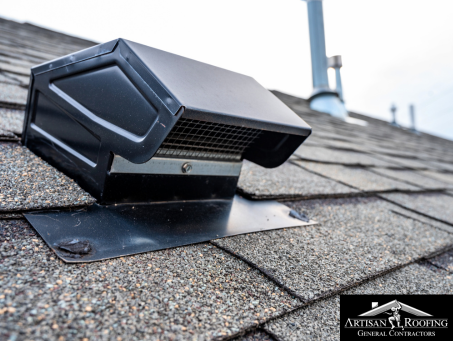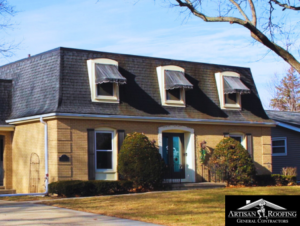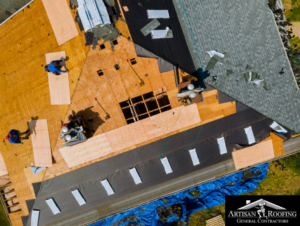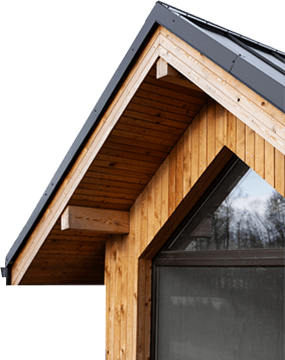A well-ventilated roof is essential for any homeowner looking to improve their home’s comfort, efficiency, and longevity. Roof vents play a vital role in regulating attic temperatures, controlling humidity, and preventing moisture buildup. Yet, with so many roof vent options on the market, it can be overwhelming to choose the right one for your home.
This comprehensive guide breaks down everything you need to know about roof vents, covering their types, benefits, and best practices for installation and maintenance. By the end, you’ll have a clearer understanding of the role roof vents play in protecting your home and making it more energy-efficient.
Why Roof Vents Are Important
Roof vents are vital components of a healthy roofing system. They work by allowing air to circulate through the attic, balancing the temperature and humidity levels. Without proper ventilation, attics can become hot and humid, which can lead to problems like mold growth, roof deck deterioration, and even higher energy bills.
Adequate roof ventilation helps maintain a stable attic environment, which not only extends the lifespan of your roofing materials but also helps prevent structural damage, keeping your home in better condition over time.
How Roof Vents Work
Roof vents function by creating a continuous flow of air through the attic. This airflow is achieved through a system of intake vents and exhaust vents that work together to ensure efficient ventilation.
- Intake Vents. Installed at the lower parts of the roof, usually at the eaves or soffits, intake vents allow cool, fresh air to enter the attic.
- Exhaust Vents. Placed near the roof’s peak, exhaust vents allow warm, humid air to escape, creating a steady outflow of stale air.
The combination of intake and exhaust vents keeps the attic ventilated, reducing the risk of moisture buildup and maintaining a comfortable home environment.
Types of Roof Vents
Roof vents come in various types, each with unique characteristics and advantages. Understanding these options will help you choose the best ventilation solution for your home.
1. Ridge Vents
Ridge vents are installed along the peak or ridge of the roof. This ensures constant ventilation across the entire attic. These low-profile vents blend seamlessly with the roofline, making them a popular choice for homeowners looking for effective yet subtle ventilation.
- Benefits. Ridge vents offer excellent airflow with minimal maintenance, effectively preventing ice dams and reducing energy costs.
- Considerations. They require professional installation and must be paired with adequate intake vents to work effectively.
2. Box Vents (Static Vents)
Box vents, also known as static vents, are fixed, low-profile vents that rely on natural air movement to release hot air from the attic. Typically installed in clusters, they provide adequate ventilation for small to medium-sized attics.
- Benefits. Box vents are easy to install and budget-friendly, making them a practical choice for many homeowners.
- Considerations. They may not provide sufficient ventilation in large attics or areas with minimal wind, as they don’t actively pull out air.
3. Turbine Vents
Turbine vents, sometimes called whirlybirds, use wind power to rotate and help remove hot air from the attic. Installed near the roof’s peak, they work well in windy areas and provide consistent ventilation.
- Benefits. Turbine vents operate without electricity, are affordable, and function well even on mild days.
- Considerations. They can be noisy in high winds and may need regular maintenance to ensure they spin freely.
4. Power Vents (Motorized Vents)
Power vents are electric-powered roof vents that actively pull hot air out of the attic. They offer strong, consistent ventilation, regardless of external weather conditions.
- Benefits. Power vents are highly effective, especially for large attics or homes in hot climates. Many models come with thermostats and humidistats, which automatically adjust ventilation based on attic conditions.
- Considerations. Power vents require an electrical connection and may increase energy costs. Over time, the motors may need replacement.
5. Solar-Powered Vents
Similar to power vents, solar-powered vents use sunlight to operate, providing active ventilation without relying on your home’s electricity. They’re an eco-friendly option that can help lower energy costs while keeping the attic ventilated.
- Benefits. Solar-powered vents are energy-efficient and sustainable, making them an excellent choice for homes in sunny regions.
- Considerations. They may be less effective on cloudy days and have higher upfront costs compared to other options.
Choosing the Right Roof Vent for Your Home
Selecting the right roof vent involves evaluating several factors, including the size of your attic, local climate, and roof structure. Here’s a step-by-step guide to help you make an informed decision:
1. Assess Your Attic Space
Determine the size and layout of your attic. Larger attics typically require more ventilation, which may mean using multiple vents or choosing high-capacity options like ridge vents or power vents.
2. Consider Your Climate
Your local climate plays a significant role in selecting the right vent type. For instance, turbine vents are ideal in windy areas, while power or solar-powered vents are better suited for hot regions where consistent airflow is needed.
3. Balance Intake and Exhaust
A well-functioning ventilation system requires a balance of intake and exhaust vents. Intake vents draw in cool air, while exhaust vents release hot air. Both are necessary for effective ventilation, so ensure your chosen vent system includes a combination of both types.
4. Evaluate Installation and Maintenance
Consider the installation and upkeep of each vent type. Some, like ridge vents, need professional installation, while others, like box vents, are simpler to install but may need more frequent maintenance.
Common Roof Ventilation Mistakes
Even with the best vents, improper installation or maintenance can reduce their effectiveness. Avoid these common ventilation mistakes to get the most out of your roof vents:
1. Insufficient Ventilation
Failing to install enough vents can result in inadequate airflow, leading to excess heat and moisture in the attic. Ensure you have enough vents to keep air circulating throughout the attic.
2. Mixing Vent Types
Combining different types of exhaust vents, such as ridge vents with box vents, can disrupt airflow and reduce ventilation efficiency. Stick to one type of exhaust vent to maintain consistent airflow.
3. Blocking Intake Vents
Make sure intake vents are unobstructed. Blocked vents prevent fresh air from entering, compromising the entire ventilation system.
4. Skipping Maintenance
Even low-maintenance vents require occasional inspections. Regularly check for blockages, wear, or damage, and address issues promptly to keep your vents functioning effectively.
The Benefits of Proper Roof Ventilation
Investing in proper roof ventilation has numerous benefits that impact both your home’s structure and your comfort:
1. Extends Roof Lifespan
Adequate ventilation prevents heat and moisture buildup, protecting roofing materials and extending your roof’s life. This reduces the need for repairs or early replacements, saving money in the long run.
2. Lowers Energy Costs
A well-ventilated roof reduces the workload on your HVAC system by keeping attic temperatures stable. This helps lower cooling and heating costs, making your home more energy-efficient.
3. Reduces Moisture Damage
Roof vents prevent moisture from accumulating in the attic, reducing the risk of mold growth, wood rot, and insulation deterioration. This helps protect your home’s structure and ensures a healthier indoor environment.
4. Improves Indoor Comfort
By stabilizing attic temperatures, roof vents help maintain a more comfortable indoor climate, reducing temperature fluctuations and improving overall comfort.
Cost-Benefit Analysis of Roof Ventilation Systems
While the benefits of roof ventilation are clear, it’s essential to consider both the upfront costs and long-term savings associated with each system.
Upfront Costs
The initial cost varies depending on the type of roof vent chosen. Ridge vents, known for their effectiveness and low profile, typically come with moderate installation costs due to the complexity of the process. In contrast, turbine vents and box vents are more affordable but may require professional placement for optimal function. Solar-powered and power vents come at a higher price point but offer advanced features and efficiency.
Maintenance
Maintenance requirements differ by vent type. Ridge vents and solar-powered vents are generally low-maintenance, while turbine vents may need occasional lubrication and repair. Power vents require periodic motor replacements, adding to the long-term maintenance cost.
Long-Term Savings
Proper ventilation helps reduce energy bills by lowering the strain on your HVAC system. Additionally, by extending the life of roofing materials and preventing costly issues like mold or wood rot, a well-chosen ventilation system can offer substantial long-term savings.
Roof Vent FAQs
1. What is the purpose of a roof vent?
Roof vents allow air to flow through the attic, regulating temperature and moisture levels. This helps prevent mold, structural damage, and high energy costs.
2. Which type of roof vent is best?
The best roof vent depends on your attic size, climate, and roofing style. Ridge vents are often highly effective for balanced, continuous airflow, while power and solar-powered vents provide strong ventilation for larger or hotter attics.
3. Is roof ventilation necessary?
Yes, roof ventilation is necessary to maintain the health and longevity of your home. It helps prevent moisture buildup, wood rot, and mold and reduces energy costs.
4. What are the drawbacks of roof vents?
Roof vents may require maintenance, and improper installation can reduce their effectiveness. Choosing the wrong type or installing too few vents can lead to inadequate airflow.
Final Thoughts: Choosing the Right Roof Vent
A well-designed roof ventilation system goes beyond extending your roof’s lifespan; it contributes significantly to your home’s energy efficiency, indoor comfort, and overall structural health. By keeping attic temperatures stable and preventing moisture buildup, roof vents protect your home’s integrity and reduce the risk of costly issues such as mold, wood rot, and premature roofing material deterioration.
When choosing a roof ventilation system, consider factors like your attic size, local climate, and your specific energy needs. While ridge vents provide excellent passive ventilation for homes in moderate climates, solar-powered or electric vents might be a better choice for larger attics in warmer regions. Balancing intake and exhaust vents is critical to ensure efficient airflow. Meanwhile, regular maintenance will help sustain their effectiveness over time.
Whether you’re building a new home or upgrading an existing roof, selecting the right ventilation solution is a proactive step toward a healthier, more efficient, and comfortable home environment. Proper roof ventilation isn’t just a technical upgrade; it’s an investment in your home’s longevity and your quality of life.






